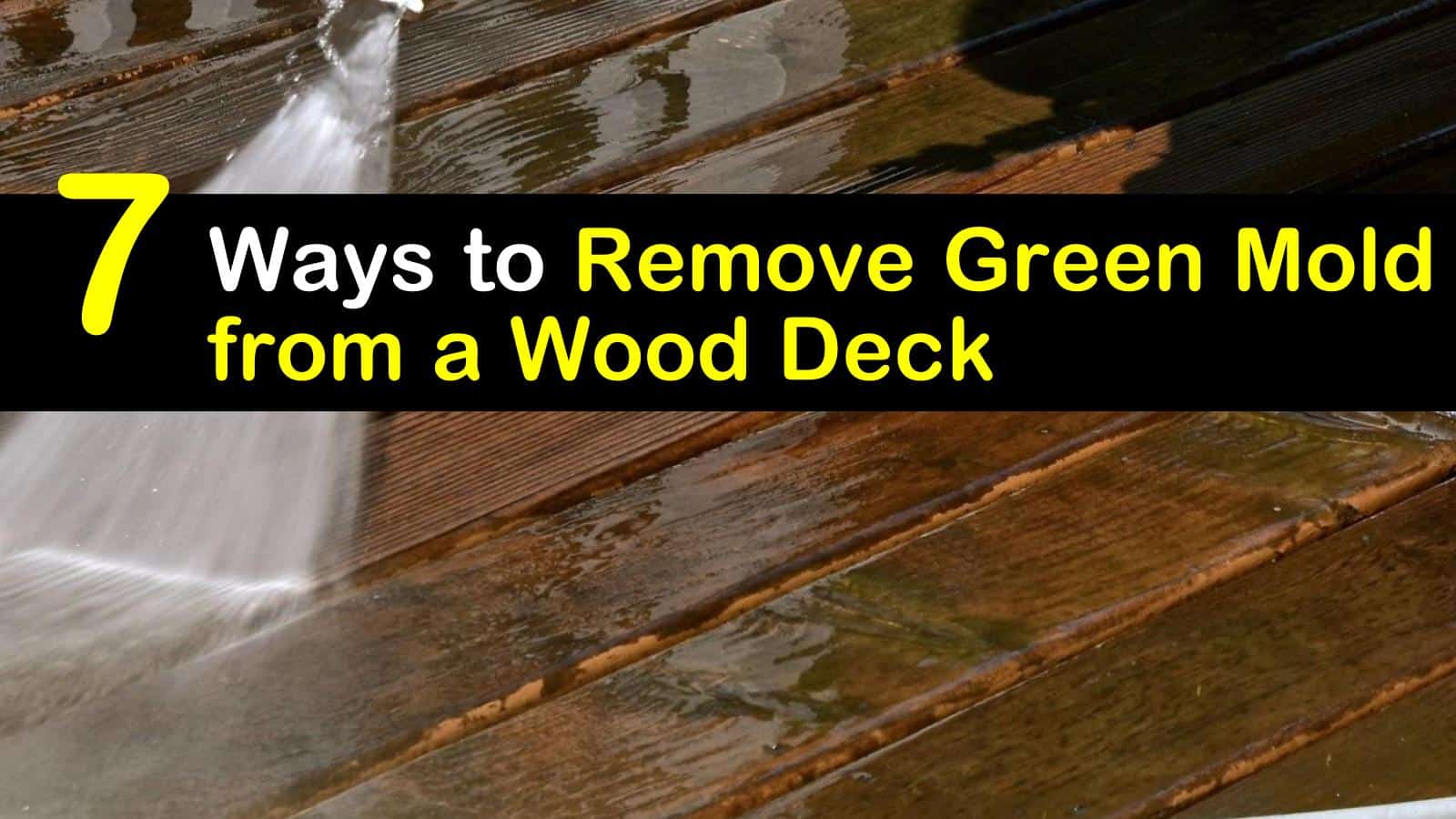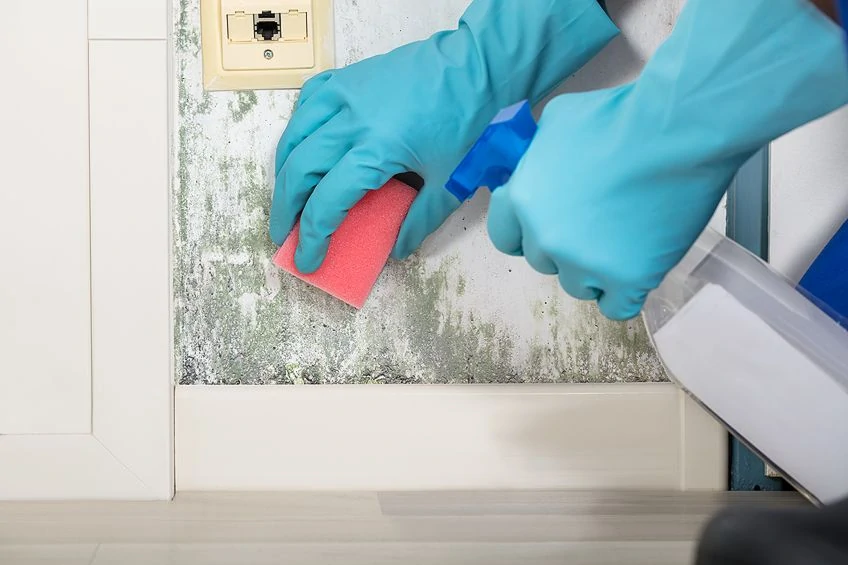If you've noticed mold growing on your wood kitchen table, don't panic. It's a common issue that can be easily remedied with the right tools and techniques. In this article, we'll guide you through the process of cleaning a moldy wood kitchen table and share some tips for preventing mold growth in the future.How to Clean a Moldy Wood Kitchen Table
The first step in removing mold from a wooden kitchen table is to gather your supplies. You'll need a soft-bristled brush, a mild detergent or cleaning solution, and a clean cloth. Start by using the brush to gently scrub the affected area and remove any loose mold spores. Next, mix your cleaning solution according to the instructions and use the cloth to carefully wipe down the table, making sure to cover all areas with mold growth. Rinse the table thoroughly with water and dry it with a clean towel.Removing Mold from a Wooden Kitchen Table
If you prefer to use natural remedies, there are a few options for removing mold from wood furniture. One popular method is using a mixture of vinegar and water. In a spray bottle, mix equal parts white vinegar and water and spray it onto the affected area. Let it sit for a few minutes before wiping it clean with a cloth. Another option is to mix baking soda with water to create a paste and apply it to the moldy spots. Let it sit for a few hours before wiping it away and rinsing with water.DIY Mold Removal for Wood Furniture
The best way to deal with mold on your wood kitchen table is to prevent it from growing in the first place. Mold thrives in warm, damp environments, so keeping your table clean and dry is key. After each use, wipe your table down with a dry cloth to remove any moisture. If you notice any spills or moisture on the table, make sure to clean it up immediately. You can also use a dehumidifier in your kitchen to reduce excess moisture in the air.Preventing Mold Growth on Your Kitchen Table
In addition to vinegar and baking soda, there are other natural remedies you can use to remove mold from wood. Tea tree oil is known for its antifungal properties and can be mixed with water and applied to moldy areas. Lemon juice is also effective in killing mold and can be applied directly or mixed with water. Just be sure to do a spot test first to ensure the solution doesn't damage the wood.Natural Remedies for Mold on Wood
Vinegar is a versatile and effective solution for removing mold from wood. It is a natural disinfectant and can kill up to 82% of mold species. To use vinegar for mold removal, mix equal parts vinegar and water in a spray bottle and spray the affected area. Let it sit for a few minutes before wiping it clean with a cloth. If the mold is stubborn, you can use undiluted vinegar and scrub it with a soft-bristled brush.Using Vinegar to Remove Mold from a Wooden Table
Both bleach and vinegar are commonly used to remove mold from wood, but there are some key differences between the two. Bleach is a strong disinfectant and can kill mold effectively, but it can also damage the wood if used in high concentrations. On the other hand, vinegar is a gentler option, but it may not be as effective on certain types of mold. It's best to do a spot test and use caution when using either of these solutions.Bleach vs. Vinegar for Mold Removal on Wood
If you prefer to use commercial products, there are several options available for removing mold from wood furniture. Look for products specifically designed for mold and mildew removal, and follow the instructions carefully. Some popular brands include Concrobium Mold Control, RMR-86 Instant Mold Stain Remover, and Mold Armor Mold and Mildew Remover.Best Products for Removing Mold from Wood Furniture
If your wood kitchen table has been severely damaged by mold, you may need to take more drastic measures to restore it. In some cases, sanding and refinishing the table may be necessary. Before doing so, make sure the mold is completely removed and the wood is dry. You can also use a wood cleaner and restorer to bring back the table's original shine and protect it from future mold growth.How to Restore a Moldy Wood Kitchen Table
If you're dealing with a large mold infestation on your wood kitchen table, it's best to leave it to the professionals. Professional mold remediation services have the knowledge, experience, and equipment to safely and effectively remove mold from wood furniture. They can also help identify the root cause of the mold growth and provide recommendations for preventing it in the future. In conclusion, a moldy wood kitchen table is a common issue that can be easily remedied with the right techniques. Whether you choose to use natural remedies or commercial products, the key is to act quickly and thoroughly clean and dry the affected area. With proper maintenance and preventive measures, you can keep your wood kitchen table mold-free for years to come.Professional Mold Remediation for Wooden Tables
The Dangers of a Moldy Wood Kitchen Table

The Importance of Maintaining a Clean and Mold-Free Kitchen
 A kitchen is the heart of a home, where families gather to cook, eat, and spend quality time together. However, this space can quickly become a breeding ground for harmful bacteria and mold if proper cleaning and maintenance are not regularly performed. One of the most common areas where mold can grow in a kitchen is on a wood kitchen table. While it may seem like a small issue, a moldy wood kitchen table can have harmful effects on both the table's integrity and the health of those living in the home.
A kitchen is the heart of a home, where families gather to cook, eat, and spend quality time together. However, this space can quickly become a breeding ground for harmful bacteria and mold if proper cleaning and maintenance are not regularly performed. One of the most common areas where mold can grow in a kitchen is on a wood kitchen table. While it may seem like a small issue, a moldy wood kitchen table can have harmful effects on both the table's integrity and the health of those living in the home.
Mold Can Cause Structural Damage to Your Table
 One of the main reasons to address a moldy wood kitchen table is to prevent structural damage. Mold can cause wood to rot and weaken, compromising the table's stability and potentially leading to breakage. This not only poses a safety hazard, but it can also be expensive to repair or replace a damaged table. By regularly cleaning and maintaining your wood kitchen table, you can prevent mold growth and prolong its lifespan.
One of the main reasons to address a moldy wood kitchen table is to prevent structural damage. Mold can cause wood to rot and weaken, compromising the table's stability and potentially leading to breakage. This not only poses a safety hazard, but it can also be expensive to repair or replace a damaged table. By regularly cleaning and maintaining your wood kitchen table, you can prevent mold growth and prolong its lifespan.
Mold Can Affect Your Family's Health
 Aside from damaging your table, mold can also have adverse effects on your family's health. Mold spores can easily become airborne and be inhaled, leading to respiratory issues and allergies. These health concerns can be especially troublesome for individuals with asthma or weakened immune systems. Furthermore, mold can cause unpleasant odors and stains on your table, making it unappetizing to eat on and unpleasant to look at.
Aside from damaging your table, mold can also have adverse effects on your family's health. Mold spores can easily become airborne and be inhaled, leading to respiratory issues and allergies. These health concerns can be especially troublesome for individuals with asthma or weakened immune systems. Furthermore, mold can cause unpleasant odors and stains on your table, making it unappetizing to eat on and unpleasant to look at.
How to Prevent and Remove Mold from Your Wood Kitchen Table
 The best way to prevent mold growth on your wood kitchen table is to keep it clean and dry. Wipe down the table after each use and ensure any spills or moisture are promptly cleaned up. If you notice any signs of mold, it's essential to address it immediately. To remove mold, mix equal parts vinegar and warm water and use a cloth to scrub the affected area. You can also use a mixture of baking soda and water for tougher mold stains. Regularly inspecting your wood kitchen table for any signs of mold can help catch and address the issue before it becomes a more significant problem.
In conclusion, a moldy wood kitchen table is not only unsightly, but it can also have detrimental effects on both the table's structure and your family's health. By regularly cleaning and maintaining your wood kitchen table, you can prevent mold growth and ensure a safe and healthy environment for your loved ones. Remember to address any signs of mold immediately and take preventative measures to keep your kitchen table mold-free.
The best way to prevent mold growth on your wood kitchen table is to keep it clean and dry. Wipe down the table after each use and ensure any spills or moisture are promptly cleaned up. If you notice any signs of mold, it's essential to address it immediately. To remove mold, mix equal parts vinegar and warm water and use a cloth to scrub the affected area. You can also use a mixture of baking soda and water for tougher mold stains. Regularly inspecting your wood kitchen table for any signs of mold can help catch and address the issue before it becomes a more significant problem.
In conclusion, a moldy wood kitchen table is not only unsightly, but it can also have detrimental effects on both the table's structure and your family's health. By regularly cleaning and maintaining your wood kitchen table, you can prevent mold growth and ensure a safe and healthy environment for your loved ones. Remember to address any signs of mold immediately and take preventative measures to keep your kitchen table mold-free.




















:max_bytes(150000):strip_icc()/clean-mold-off-wood-4767277-04-43708c9788ec46b2ae54f437ad5bbb3b.jpg)
















































/GettyImages-504312298-2509253a39a841cd84970089b16e794e.jpg)
























